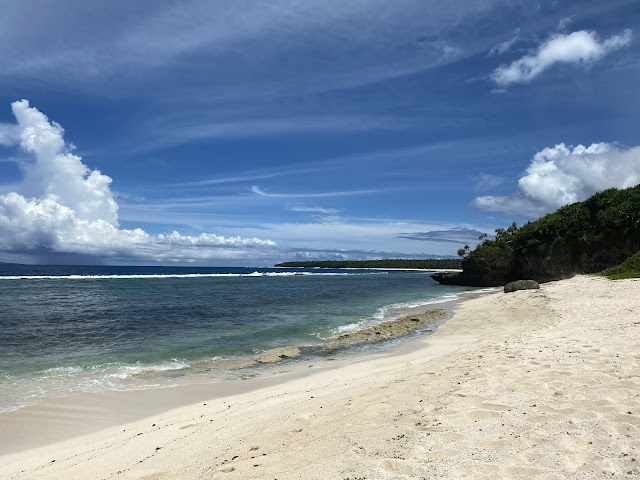We were not sure we were going to be able to visit Tonga. With the growing fear and threat of the CoronaVirus, countries and ports around the world started getting nervous. Three prior ships were denied entry to Tonga in the past week or so. Rumors abounded on our ship that we, too, would be denied. So, it was with great delight that we learned on the day that we would be docking in Tonga! Yay!
I've never been, and looked forward to seeing a new place. Meeting new people. Seeing new wonders. Learning.
I had signed up for a private tour with about a dozen or so other guests, from our roll call. It was to be about a 5-6 hour tour around the island, and included an optional swim in a cave. Bathing suit and towel in tow, I looked forward to our day.
Tonga is a Polynesian Kingdom - a constitutional monarchy since 1970 - that makes up close to 200 islands in the Pacific. It's inside the well-known Polynesian triangle - with Hawaii, Easter Island and New Zealand as its 3 points. Tongatapu is the main island of Tonga, where the royal family resides, and Nuku'alofa is the capital. There's just a little over 100,00 people, most of whom live on Tongatapu. Every time I look at the globe and see what a vast amount of space there is that is the Pacific Ocean, I am wowed.

The 3 headed coconut tree. Very unusual, as virtually all coconut trees have just 1.
The tale of the Throwing Rock (aka Tsunami Rock). The story goes that the demi-god Maui Kisikisi, son of Maui, was annoyed after always being awakened by his father's rooster crowing in the middle of the night. So Maui Kisikisi chased the rooster and threw rocks at it, but the rooster was able to escape by flying across the water to another island. But Maui Kisikisi picked up this huge boulder and flung it across the sea to this island and hit the rooster, finally killing it.
The more contemporary theory of how this ginormous rock got here is that it was tossed up on shore during a tremendous tsunami thousands of years ago. But interestingly, there's no such other type of rock found on this island.

At the Anahulu Cave and attached cultural center, we prepared for a traditional kava ceremony. The drink is passed around for all to taste. It tastes like it looks - dirty water. Yum.
Along the main road are some trees in a small cemetery, where a big family of fruit bats (aka flying foxes) live. They were really interesting to watch.


The blowholes - a long stretch of beach and coast with a bunch of blowholes are aligned against the shore. Really fantastic viewing!

These are some typical family cemeteries located all throughout the island outside of little villages.
 Displays of some tapa cloths that are made from peeled bark from mulberry trees. A tremendous amount of work goes into making these tapa cloths. The bark is beaten with a mallet-type device over and over again until paper thin. Later, dyes are used to decorate the cloths.
Displays of some tapa cloths that are made from peeled bark from mulberry trees. A tremendous amount of work goes into making these tapa cloths. The bark is beaten with a mallet-type device over and over again until paper thin. Later, dyes are used to decorate the cloths.
Grass weaving from tree fronds.
The Royal Tombs
After we swam at Anahulu Cave, we enjoyed some fresh fruits.
Drinking the kava
Local school children. Each school has different uniforms. Education is mandatory and free in Tonga, all the way through high school, and, other than a small fee, so is college.
In 1777, Captain James Cook landed in Tonga (for the 3rd time).
The Anahulu Cave
Old burial grounds
This is a typical home outside a village on Tonga








































No comments:
Post a Comment